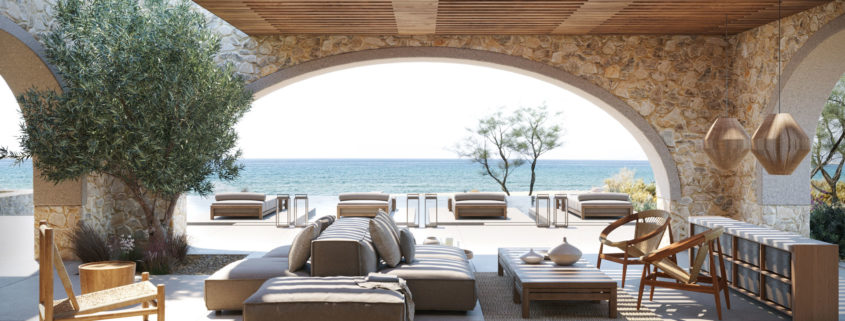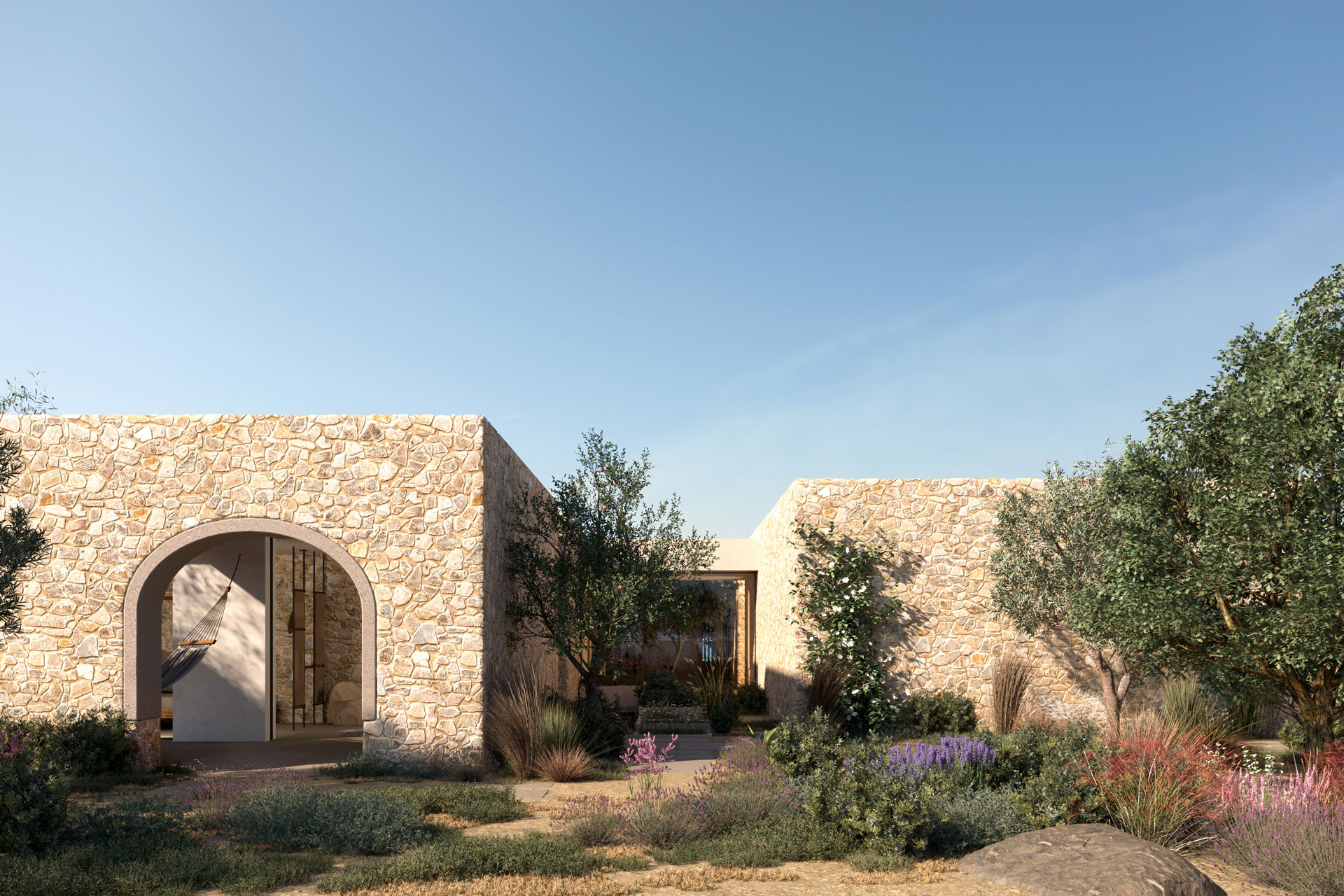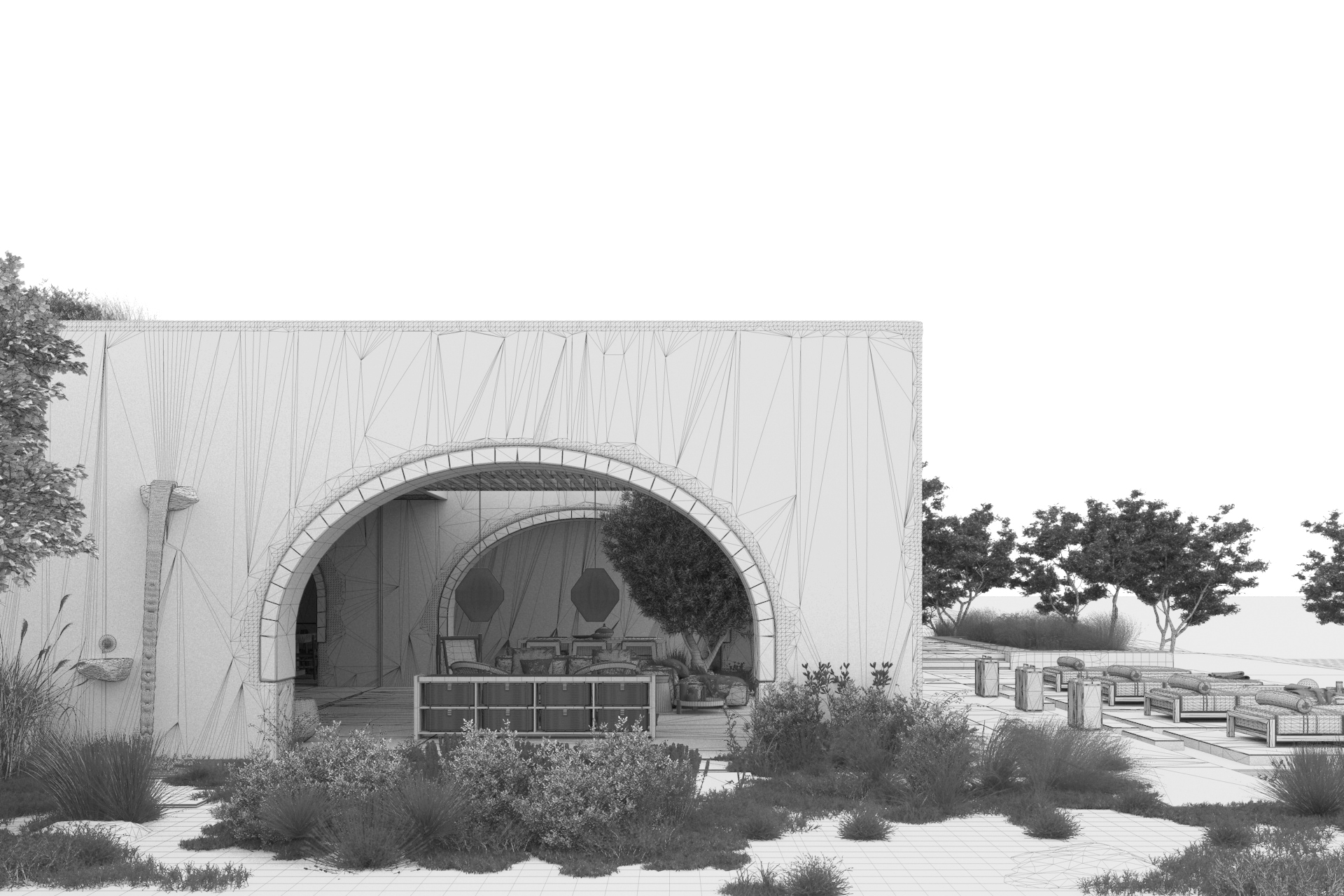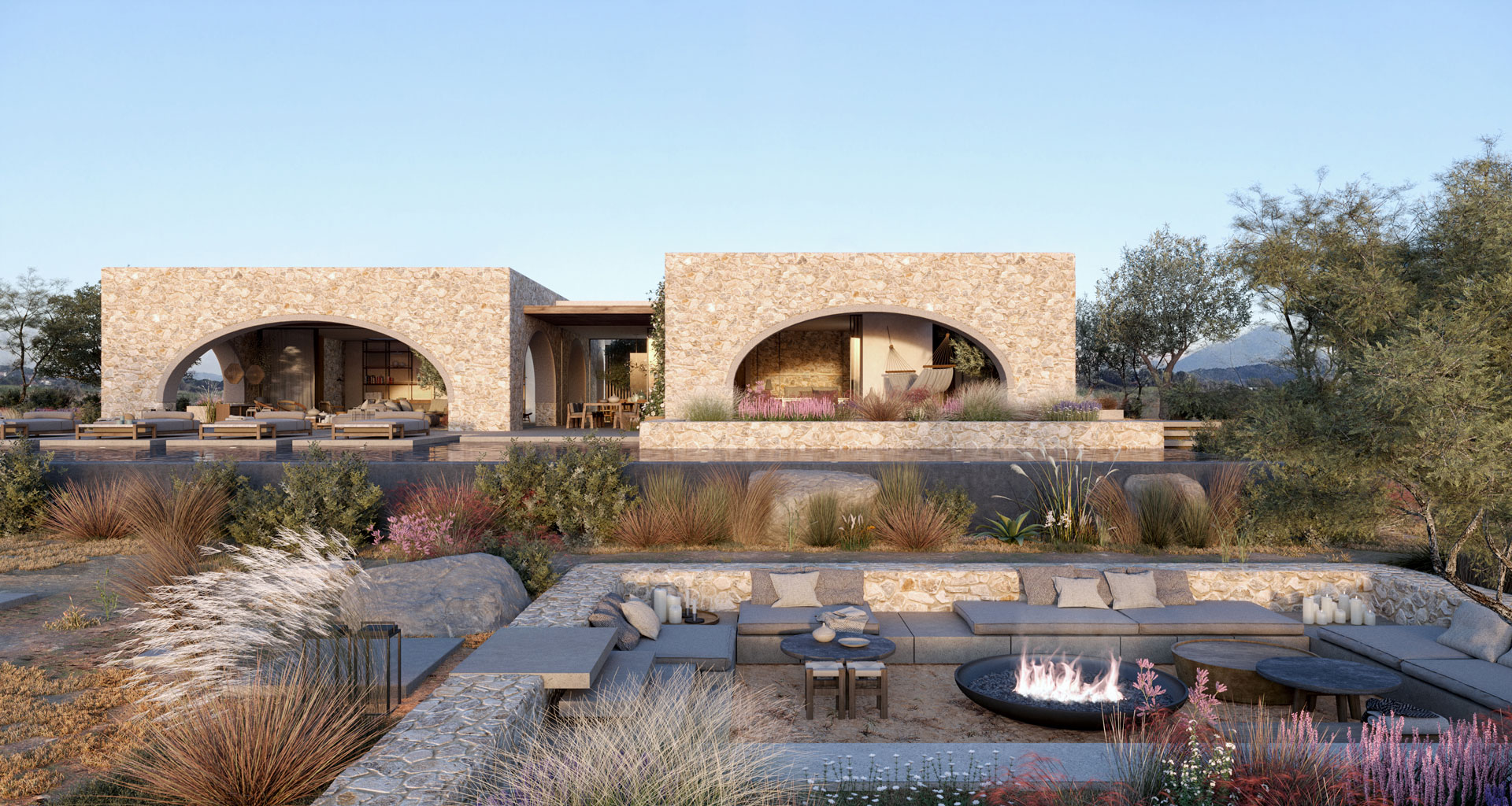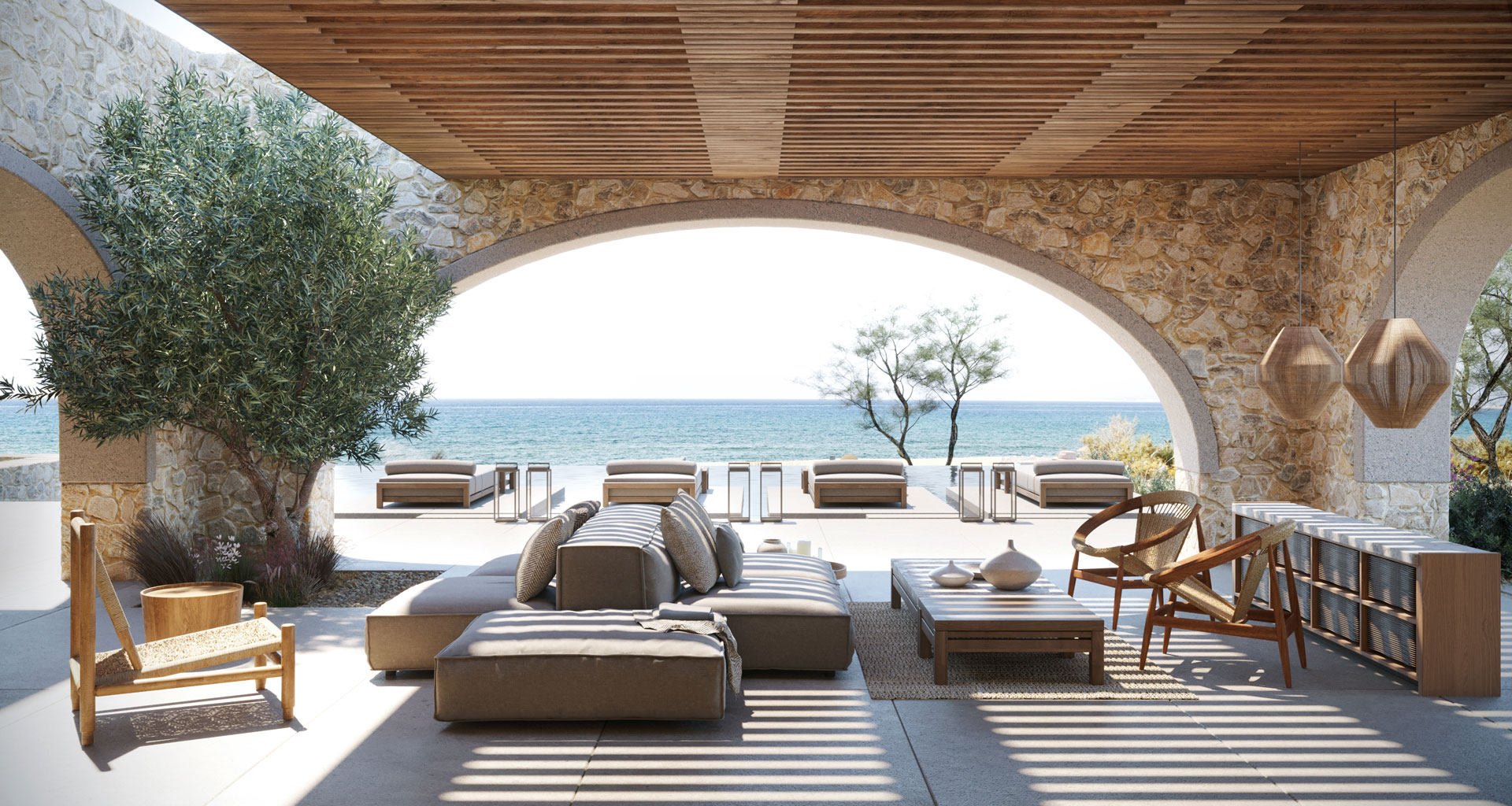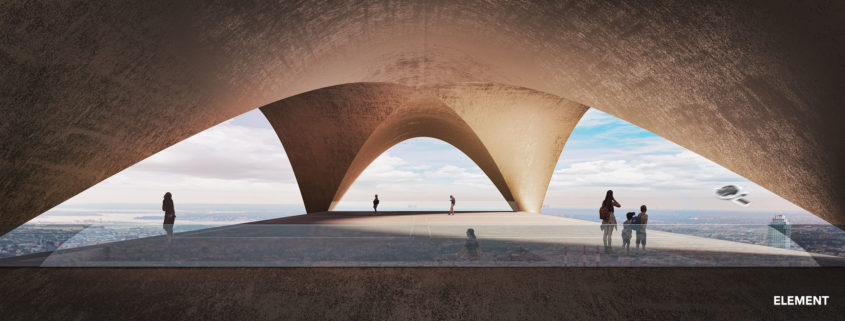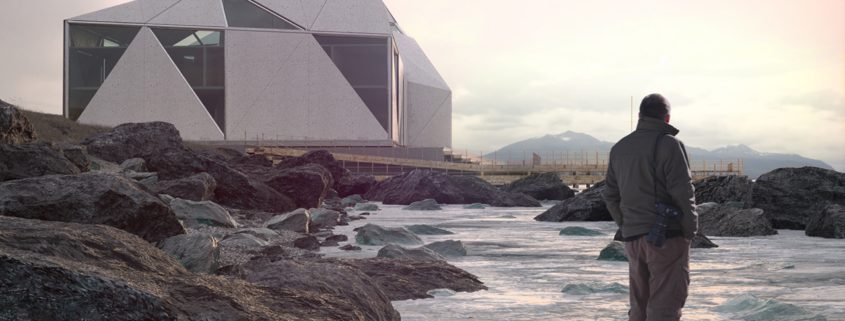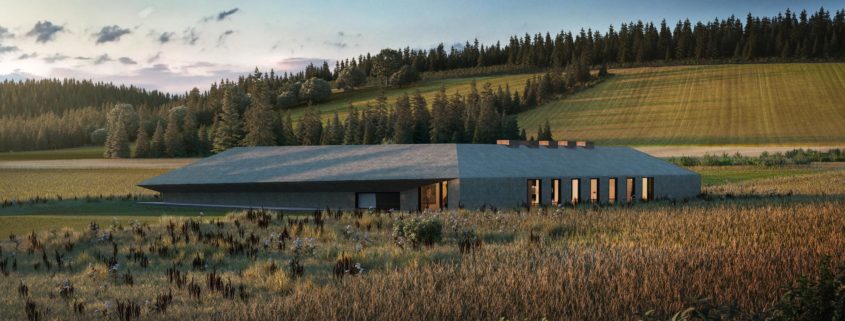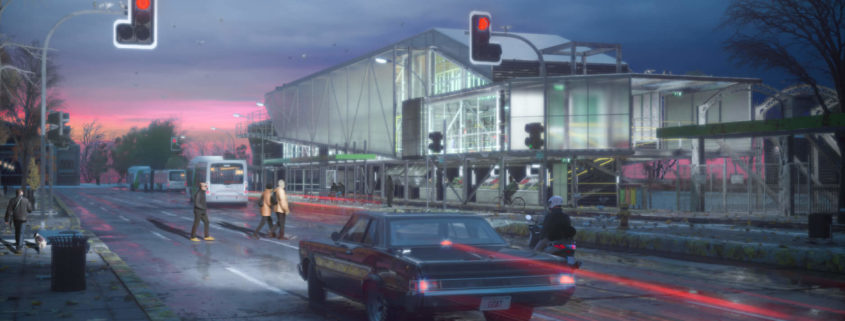Villa-ge
Architecture
Villa-ge is a beachfront villa with outstanding amenities and stunning coastal views, located in Pylos, Peloponnese, Greece, designed by k-studio architecture firm.
The design is inspired by the local vernacular architecture of Peloponnese and the natural topography of the area. Elements such as natural stone walls, arched openings, hammered concrete slabs and stone pavings compose the design palette.
Architecturally, it makes a complex system of interchanging experiences of stone volumes and their courtyard gardens, interconnected by clear circulatory paths moving through zones of social and private spaces.
3D model
The main 3d model of the project was done in Rhino 3D. The model was exported in parts from Rhino in .fbx file format into C4D. It is a very convenient file format because you can keep all your texture information and you can quickly replace any of them.
A lot of the geometry of the scene was remodeled or optimized inside Cinema. Like the stone walls and the landscape surface.
Texturing & Scattering
For the grass and plants scattering I used Forester Multicloner. I used Vertex maps to select areas of distribution and also in some cases I used different models with high, medium and low polygon count, and distribute them based on the Camera position (LOD).
Vertex maps were also used in some Layered Corona materials, like the one on the ground.
For randomization of some textures, like the wooden slats or the paving tiles, I used a script I found here to randomly select children objects. With this method I quickly applied different materials (same material with different shades) on the children objects. Then all children were merged in one single object.
Lighting
For the lighting of the scene I used different methods depending on the mood and the camera. For the interior scenes I used Corona sun and Sky only. This was prefered here because an issue for this project was the Greek summer mood, which has a very high and strong sun. This was difficult to achieve with an HDRi image (even though I “hacked” an hdri in PS to move the sun higher) because most of the hdris I had, have the sun in low position. I needed a sun at about 70 degrees to achieve correct shadows.
For the exterior views I used two different HDRi images combined with corona sun.
Saving & Post
All images were saved in CXR file format in order to edit after in the Corona Image Editor (CIE). It was also used for the denoising part. I had the option “Gather data for later” enabled in corona settings for the denoising, so I applied it in CIE.
The final post was done in PS. Some color adjustments in Camera Raw and some small touches were done with a wacom pen.












